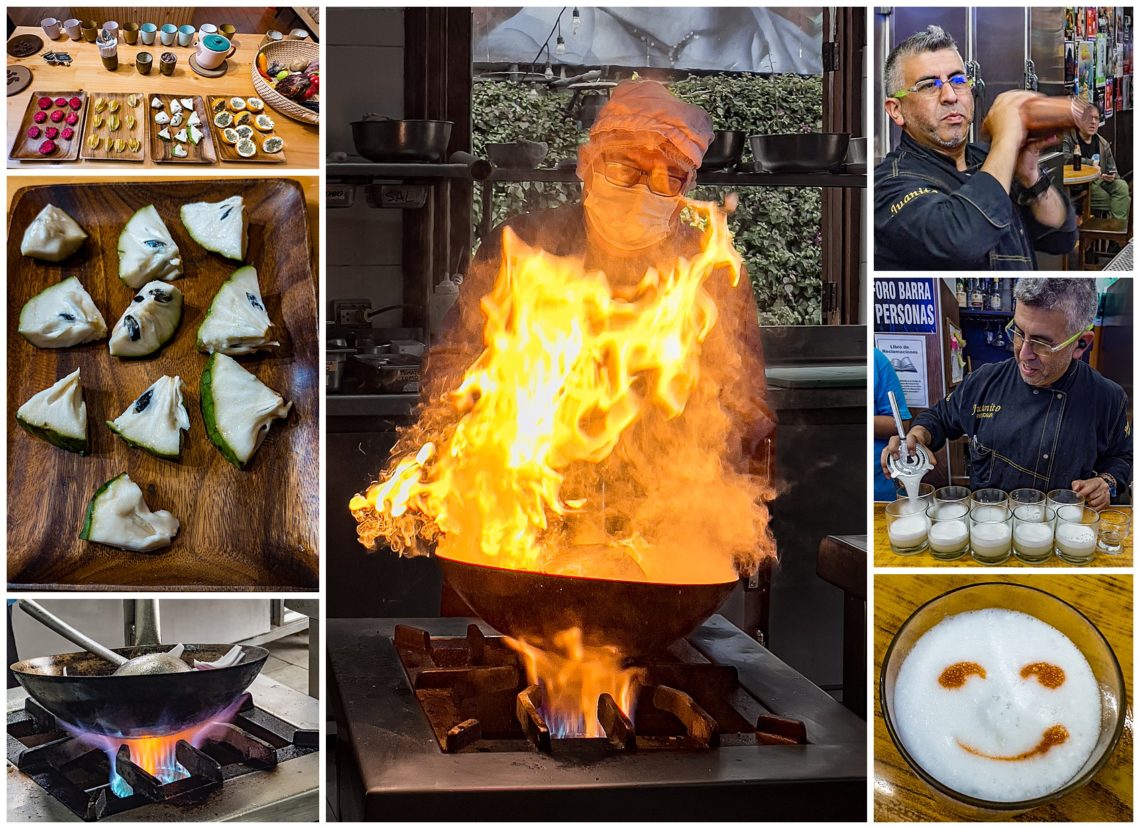
We went to Lima primarily to celebrate our 50th wedding anniversary. We spent an extra week to explore Lima, since our last visit here was in 1999, or 23 years ago. Since then, Lima has been transformed and is now known as the culinary capital of South America. We started by taking TripAdvisor’s top rated 4-hour walking tour of the Barranco neighborhood in Lima, which is the bohemian arts district filled with urban street art, adjacent to Miraflores, where we stayed.
The first stop was at a small shop selling Peruvian chocolates, Peruvian liquor, and other Peruvian delicacies. Our guide for this tour, Moises, laid out an assortment of tasting treats (upper-left and middle-left), all of which gave us a hint of how promising this afternoon tour would be. Another stop included going into a restaurant kitchen to watch lomo saltado being made on the flaming stove (lower-left and center). The tour of the historic home housing the restaurant with original artwork was also a treat. Pisco Sour is the most famous Peruvian alcoholic drink, and we were shown how to make it at a colorful, local bar (right column), where our guide was well known. Caricatures of the bar owners were painted on the wall and we were introduced to the owners. We will all remember the smiling faces using bitters painted on the pisco sours by our bartender (lower-right).
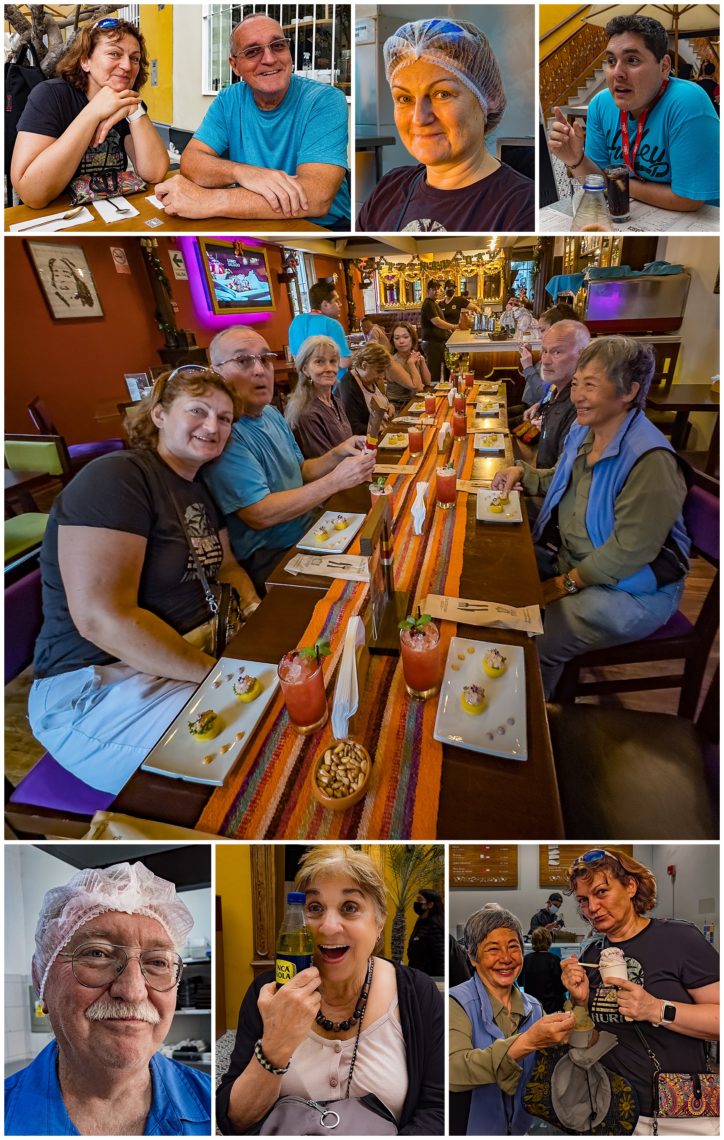
Several of our friends joined us on this Food and Arts Walking tour. We can all be seen sitting at a table (center), about to eat Peruvian ceviche, after the chef, Diego, demonstrated his recipe for making the dish. Moises, our guide joined us (upper-right). We ended the tour with a trip to Moises’ favorite ice cream shop (bottom-right). The hair net on Alla (top-center) and Burt (lower-left) were from the kitchen tour mentioned above.
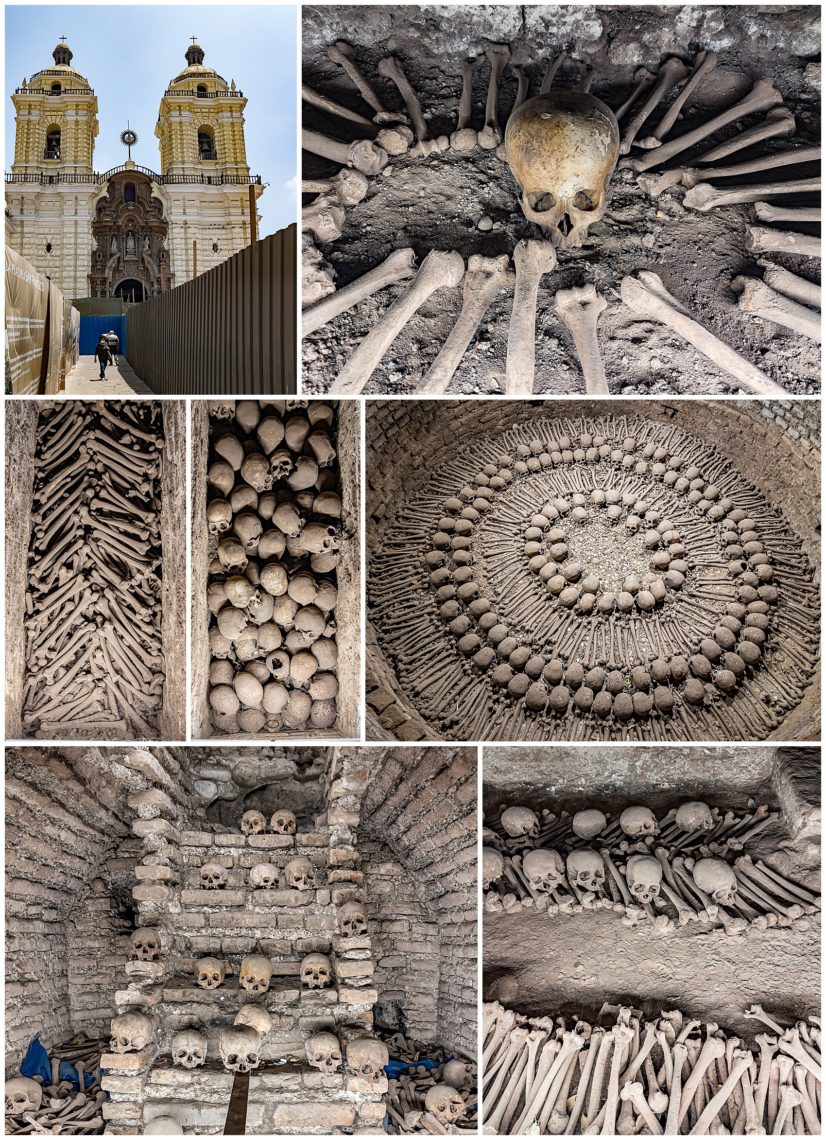
One of the most anticipated historic visit was the the Catacombs. Construction began in 1535. The walls are built to withstand the frequent earthquakes of the area. This was accomplished by using the bones of people from the area, as this was the community cemetery until 1808. Besides the untold thousands of bones in the walls, there are also the bones from an estimated 70,000 people displayed decoratively throughout the known caverns (above) — it is generally believed that the network of tunnels actually extends through the entire old part of the city, though only a few parts have been excavated. It turns out that on the day we visited, the Finale Game of the World Cup was playing, and we could hear wild cheering when Argentina won, while we were exploring the Catacombs.
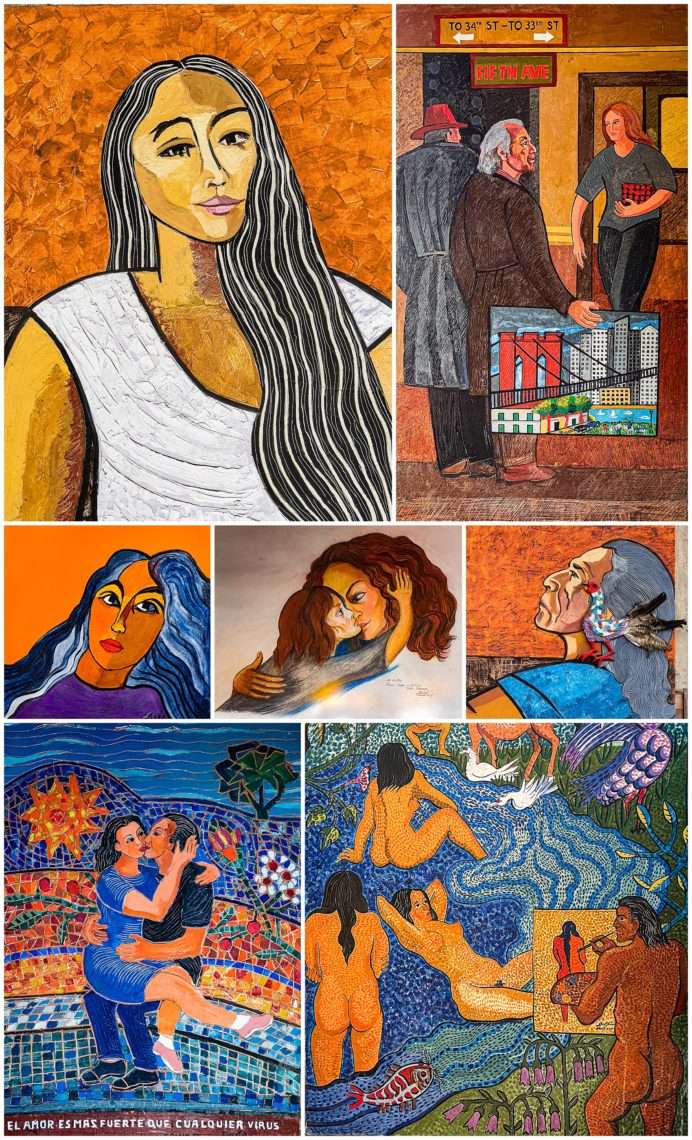
We visited the home of Victor Delfin, a celebrated artist who has lived most of his life in Lima. He has a unique style to all his work that we saw, which is spread throughout what can only be called a mansion. Above is a small selection of some of his artwork that focusses on people.
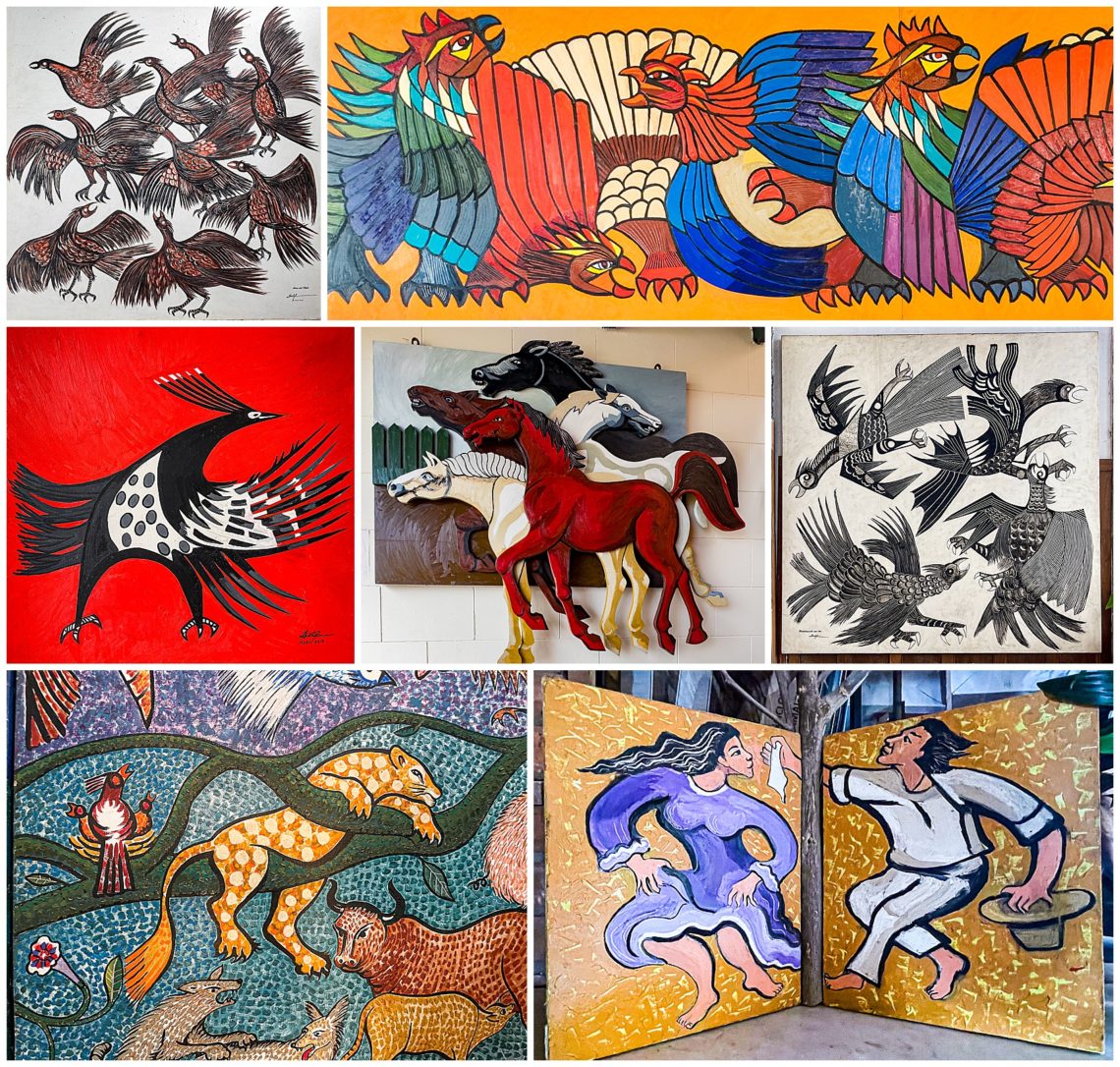
His subject matter spans a wide range of topics. Perhaps the unifying technique is that his flat artwork (paintings, tiles, etc) are all abstract, yet very recognizable. Even the tiled bathrooms were part of his creation.
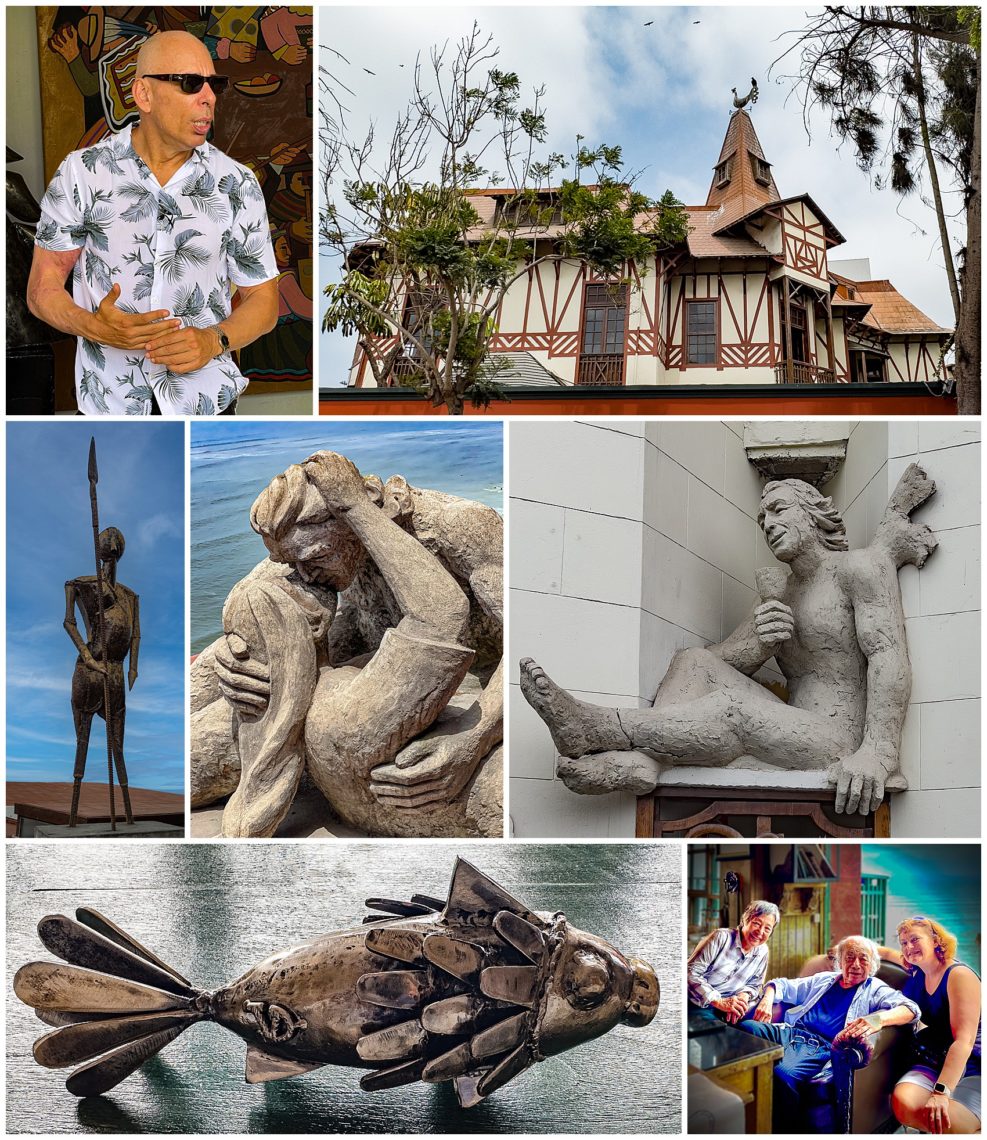
Delfin’s work also include sculptures, again with a range of subjects, as seen above. Our guide, Gabriel (upper-left) showed us through the home and told us stories of many of the art pieces. Evelyn and Alla even had a chance to chat briefly with Victor Delfin (lower-right).
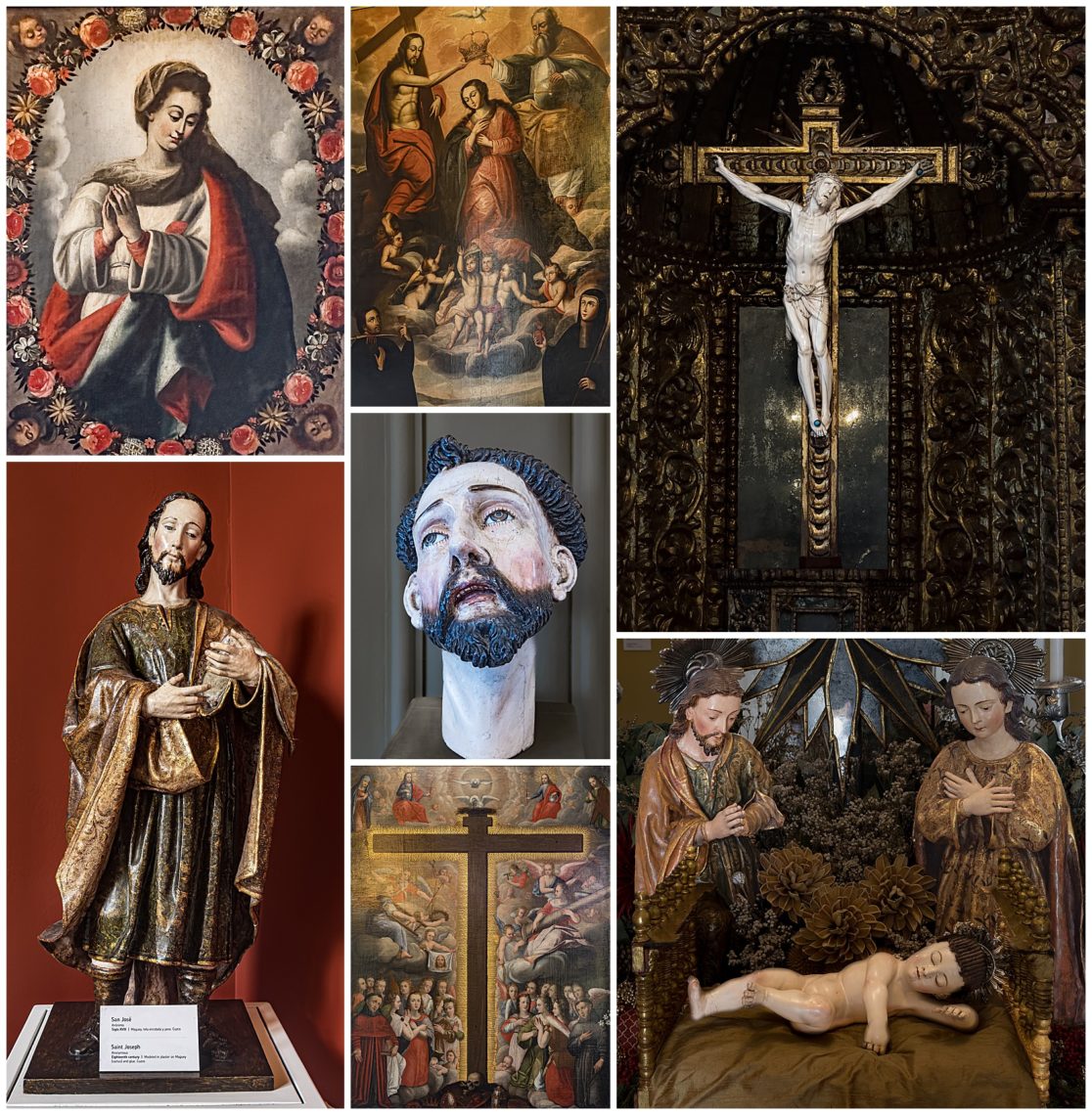
Another stop during the week was at the Pedro Osma museum. The museum was divided into several rooms, each with a theme, though they all revolved around Christianity. Most of the work shown is from the 16th and 17th century, and the museum has an active restoration program to bring back the original luster of the work.
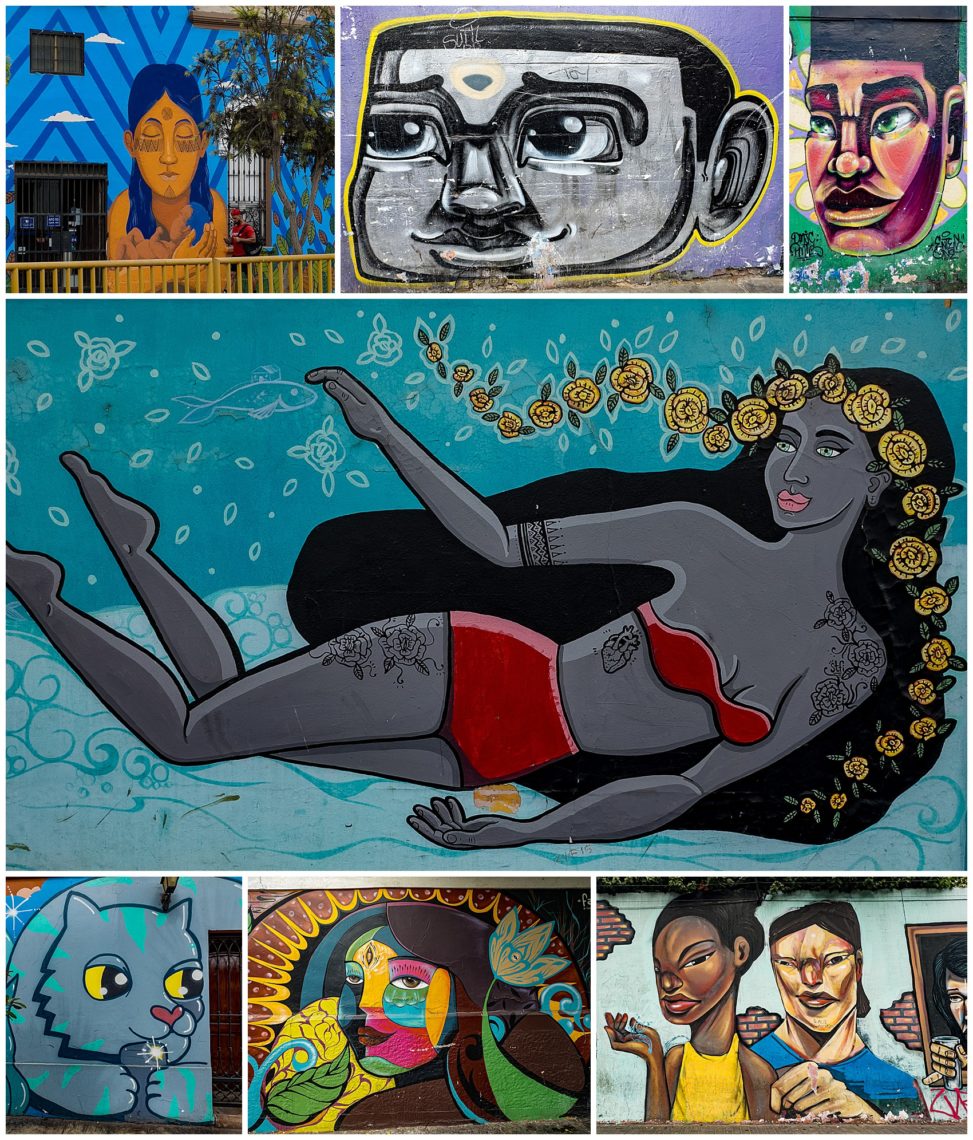
Besides food and museums, the streets of Lima, especially around the Barranco district, have many colorful murals spread throughout the city that we explored. Every time we walked another block, it seemed we would find another mural, or often a group of related murals.
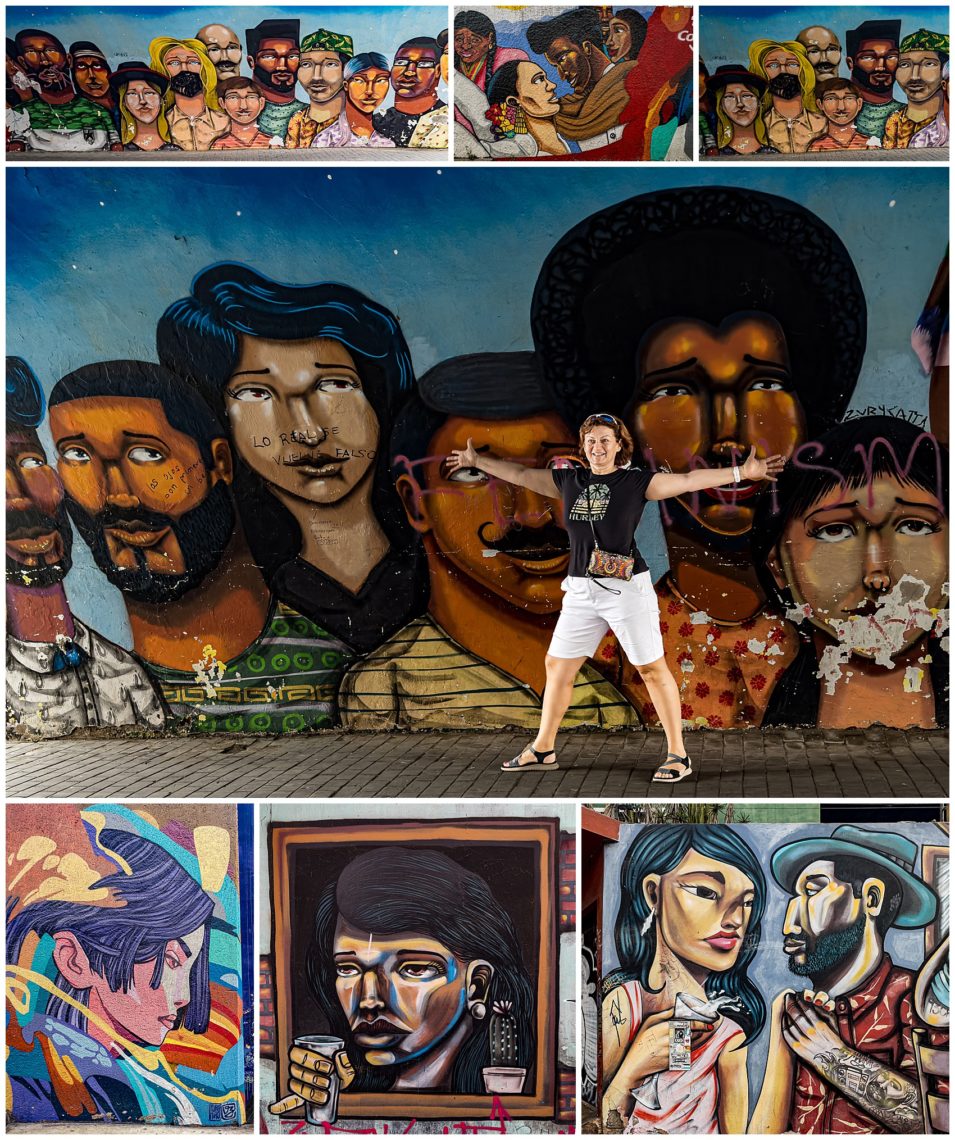
Alla took the opportunity to become part of the scene here (center).